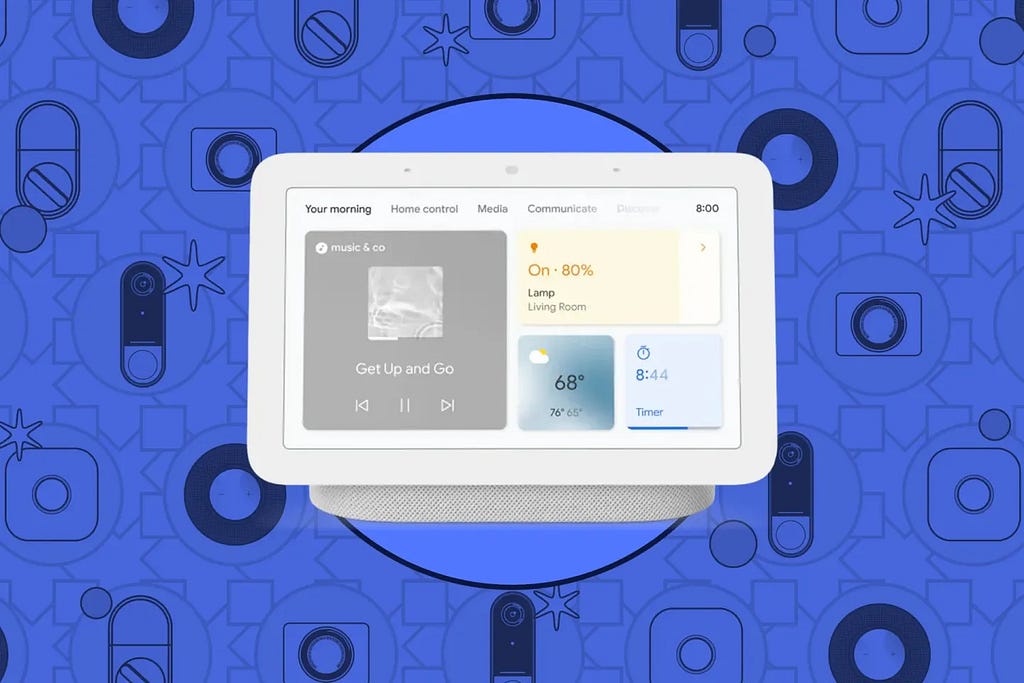The Smart Home Ecosystem is Decaying — Can Gen AI Save it? A reality check on the smart home market in 2025 
Google once seemed poised to dominate the smart home market. Google Assistant was lauded as the best of a mediocre bunch, and Nest hardware was solid. Fast forward to 2025, and it’s hard to overstate the sense of frustration among Google Home users, as a recent Gizmodo article chronicles. The app is buggy, integrations are broken, and core functions — like turning lights on and off — simply fail for many customers. Complaints on Reddit read like obituaries for a once-promising platform. Some users can’t even stop timers without the system insisting nothing is running. In August, news of a possible class action lawsuit started to percolate.
Meanwhile, Amazon’s Alexa, aka Google’s main competitor in the smart home, isn’t doing much better either. Alexa has been the most widely adopted voice assistant, with millions of Echo devices scattered across households worldwide. But Amazon knew it needed an AI makeover once ChatGPT made conversational AI mainstream. The result was Alexa+, a generative AI–infused upgrade that promised richer conversation, multistep task handling, and less reliance on rigid “robot pidgin” commands.
At launch, Alexa+ seemed promising; in reality as it rolls out, however, it has been a buggy mess. The new LLM-powered Alexa is indeed more conversational,, but it’s also slower, less reliable, and sometimes hilariously verbose. At one point, as a New York Times reporter notes, it would answer requests for a simple timer with a mini-lecture on the history of kitchen timers. Basic functions like cancelling alarms, which the old Alexa handled flawlessly, now fail.
Then there’s Apple. Siri has been mocked for years, and Apple’s delayed AI upgrades have left it behind competitors. Promised features, like pulling itinerary data across emails, texts, and maps, were demoed to great fanfare at WWDC 2024 — only to be delayed indefinitely. Apple is now scrambling to rebuild Siri, reportedly putting together an “Answers, Knowledge, and Information” team, also known as AKI, to a stripped down ChatGPT experience.
If these tech companies embody platform decay, the Matter standard illustrates a broader ecosystem decay. Marketed as the universal standard that would finally let devices from Apple, Amazon, Google, and hundreds of manufacturers talk to each other, Matter launched with fanfare. By 2025, though, it’s floundering.
Matter devices don’t reliably work across platforms, features vary by ecosystem, and certification processes remain slow and costly. For users, it means confusion and disappointment. For manufacturers, it means headaches and added expense. The promise of “buy once, control anywhere” has been undermined by fragmentation, eroding trust in the very standard meant to fix the problem. While ongoing updates are moving things in the right direction, its future still largely depends on manufacturers committing more consistently to the standard.
The reason behind this platform decay is complex and multifaceted.. First, fragmentation has won over integration, as Google, Amazon, and Apple each prioritized ecosystem lock-in over interoperability, leaving standards like Matter bogged down by compromise. Furthermore, voice assistants were billed as intelligent companions but acted more like brittle command-line tools, with each much-hyped “AI glow-up” only raising expectations before disappointing users.
Despite these upgrades, consumer behavior hasn’t shifted much at all — a recent YouGov survey found that 59% of U.S. adults still use AI assistants mainly to check the weather, 51% to play music, 47% to get answers from the web, and 40% to set timers, almost identical to how people were using them back in 2018.
In short, years of neglect, combined with the tech industry’s shifting focus to AI priorities, have left its smart home ecosystem crumbling.
Hope for the Future of Smart Home
Looking ahead, both Google and Amazon plan to keep pushing more AI assistants into smart homes. As part of its “Made with Google” event this week, Google unveiled its biggest smart home push in years with “Gemini for Home,” which will replace Google Assistant on Nest devices starting later this year.
 Google for Home | The Verge
Google for Home | The Verge
Crucially, Gemini is positioned as more than a voice upgrade. It’s framed as a reasoning agent that can help cook meals, manage calendars, and even brainstorm household purchases. It’s the first real attempt to turn the assistant into an in-home AI companion.
Unlike its predecessor, Gemini is designed for nuanced commands: “Turn off all the lights except the bedroom,” or “Play that song from this year’s racing movie.” It also integrates Gemini Live, enabling natural back-and-forth conversation without repeating “Hey Google.”
Amazon, meanwhile, has been pushing forward with Alexa+. The LLM integrates more than 70 AI models, including Anthropic’s Claude, orchestrated to tackle different tasks. Although Alexa+ has struggled with reliability so far, as previously mentioned, if Amazon can smooth out the bugs, Alexa+ could reestablish Alexa as the default household assistant for many Prime households.
Meanwhile, Apple’s approach looks different. Rather than betting on flashier conversation skills alone, it is improving the App Intents, a long-standing framework that lets Siri directly operate apps on behalf of the user. Testing is reportedly underway with select third-party apps, including Uber, AllTrails, Threads, Temu, Amazon, YouTube, Facebook, WhatsApp, and even a few games, in addition to Apple’s own apps. If Apple executes well, App Intents could turn its ecosystem into the most seamless, voice-first operating system available, a foundation that would extend naturally into smart home devices, either from third-party manufacturers or Apple itself.
In tandem to playing AI catch-up, Apple is also exploring more radical hardware moves: smart home displays, and even tabletop robots. One of the robots is apparently a tabletop robot that “resembles” an iPad mounted to an arm that can move around and follow users as they move around a room, Bloomberg reports. Whether these products ever make it out of the lab remains to be seen, but Apple is clearly betting that its eventual smart home future will be built not just on Siri, but on AI-powered robotics that can act as true digital companions.
All of this, of course, raises an ongoing question for Google Home: Where is the hardware? Aside from the Pixel Tablet, Google hasn’t refreshed its smart speakers or displays since 2021. With Gemini for Home being a major upgrade for Google Home, it’s likely that new hardware designed to showcase its capabilities will launch alongside it this fall.
Then, there’s still the question of a sustainable business model beyond device sales. Google hasn’t announced pricing for the paid tier of Gemini for Home, but Gemini Live, with its more advanced capabilities, is a likely candidate for a premium plan. Amazon has gone the subscription route with Alexa+, bundling it into its Prime subscription as a perk. Google may follow suit and bundle it into its Nest Aware or Google One plans. It recently increased the price of Nest Aware to $10 a month with no major feature upgrades. Apple is unlikely to charge for Siri 2.0 or App Intent integration, but perhaps selling new smart home devices is what they’d be interested in again.
What It Means for Brand Marketers
For us markerers, the smart home has long felt like a promising channel that never quite lived up to the hype. The idea is irresistible: always-on, voice-enabled devices meeting people in intimate, everyday moments. In practice, though, the tools and integrations have lagged behind consumer expectations. Generative AI may finally change that trajectory. As assistants get better at understanding nuance and handling multi-step tasks, smart home might finally evolve from a utility interface into a new media channel people actually engage with.
Gen AI also opens the door to contextual, utility-based branding that feels additive rather than interruptive. Think recipe assistants that suggest a sponsored ingredient swap when it truly fits, or guided workouts where a partner brand powers the warm-up sequence instead of shoehorning in a pre-roll. Bedtime stories, cleaning routines, even “Sunday reset” checklists become spaces where a brand can contribute content, not just messaging.
Lastly, we need to acknowledge that not every part of the smart home interactions should be monetized, and some of the more utility-driven smart home devices are fundamentally incompatible with transitional ads or brand opportunities. And that’s OK, because when people trust that essential utility functions won’t be interrupted by ads, they’d be more open to value-added moments elsewhere (pantry replenishment, meal planning, cleaning routines, ambient entertainment) delivered transparently and on their terms.
The Smart Home Ecosystem is Decaying — Can Gen AI Save it? was originally published in IPG Media Lab on Medium, where people are continuing the conversation by highlighting and responding to this story.

